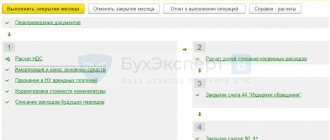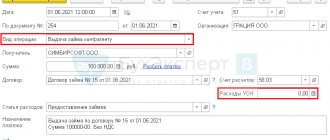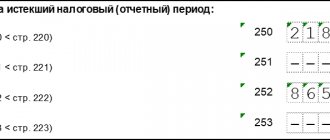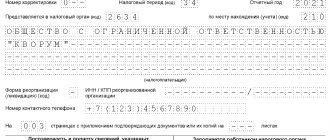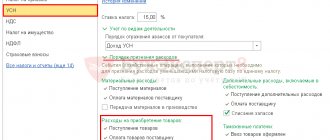Leasing, rent and loan: what is the difference
Equipment rental is also a solution to the problem. But there are disadvantages: you won't be able to charge depreciation on the rental property, and you won't own the equipment itself.
Another way out is lending. But loan terms are often prohibitive for small businesses.
Leasing is a hybrid of lending and renting. It is given on more favorable terms than a loan. As with rent, you will pay for the use of the property, but these payments will help you gradually buy the property. You will also accrue depreciation as you use it if the asset is on your balance sheet.
The main advantages of leasing
The advantages of leasing transactions for individual entrepreneurs are visible at first glance.
- Unlike banks and other credit institutions, leasing companies have less stringent requirements for the life of an individual entrepreneur, as well as its financial condition, income and turnover.
- To obtain a leased asset, an individual entrepreneur is not required to draw up a business plan.
- The leasing company makes the final decision on the possibility of working with a specific individual entrepreneur in a fairly short time (sometimes within one day). At the same time, the required package of documents for concluding a leasing agreement is significantly less than that required for banking organizations.
- For individual entrepreneurs, when leasing under certain taxation regimes, tax breaks and benefits are possible.
- Leasing companies do not have commissions, which are necessarily included in almost all bank loan programs.
- After concluding a leasing agreement, an individual entrepreneur does not need to immediately pay the entire cost of an expensive purchase.
- As soon as the agreement is concluded, the entrepreneur can immediately begin to use any property purchased on lease.
- Leasing companies, as a rule, give the client the right to choose the supplier of a particular product.
- The client of a leasing organization most often does not need to look for guarantors or provide collateral.
- The higher the price of the leased object, the more favorable the terms of its purchase.
- You can pay all lease payments ahead of schedule (but usually this right occurs no earlier than six months after the conclusion of the leasing agreement).
- Leasing companies, although not very willing, nevertheless almost always meet halfway in situations where a deferred payment is required.
Thus, leasing has quite a lot of advantages.
Features of leasing when simplified “Income” and “Income-expenses”
The simplified tax system of 6% involves only accounting for income. When you receive an asset, no income is generated, and you do not keep track of expenses. This means you cannot write off payments under a leasing agreement as expenses. If you intend to lease assets, then it is better to use the simplified “Income minus expenses”.
If the simplified tax system is 15%, take into account leasing payments in expenses at the time of payment. Make sure that payments under the leasing agreement are not advance payments, as they cannot be written off as expenses. Advances arise in two cases:
- the leasing agreement stipulates that payments are made to pay off the redemption price;
- you make current payments earlier than the deadline specified in the agreement.
Write off advance payments as expenses when ownership of the asset is transferred to you.
Important! If the transferred asset is on your balance sheet, keep track of the residual value of your fixed assets - 150 million rubles. If you exceed the limit, you will lose the right to use the simplified tax system.
Keep records, pay salaries, taxes and contributions, report via the Internet to Kontur.Accounting. The web service itself will calculate the amounts, select transactions, and generate reports. Get free access for 14 days
Results
When providing or receiving property on lease, the simplifier must take into account restrictions on the amount of income and the amount of residual value of fixed assets. Recognition of the value of leased fixed assets as expenses depends on whether the contract provides for the redemption value of this property, and on whose balance sheet it is located.
How leasing transactions are reflected in the accounting accounts, read the article “Leasing under the simplified tax system, income minus expenses - transactions.”
Sources: Tax Code of the Russian Federation
You can find more complete information on the topic in ConsultantPlus. Free trial access to the system for 2 days.
Accounting for the leased asset
If the leased asset is listed under the agreement on the balance sheet of the lessee, recognize it in accounting as a fixed asset. Its price includes:
- all expected payments under the leasing agreement, including the purchase price;
- costs of delivery, setup and completion of the leased item.
Important! In tax accounting, the initial cost of a leasing asset is equal to the amount of the lessor's expenses for the purchase and setup of property (clause 1 of Article 257 of the Tax Code of the Russian Federation). Even if the asset is on the lessee’s balance sheet.
When accounting for the lessee's balance sheet, create the following entries:
- Dt08 Kt76 - reflects the cost of property received under a leasing agreement;
- Dt08 Kt20/23/25/26/60/76 - reflects the costs of installation, commissioning, etc.;
- Dt01 Kt08 - the leasing object was put into operation;
- Dt 20/23/25/26/29/44 Kt02 - depreciation.
If the leased property is listed on the lessor's balance sheet , reflect the received property on the debit of off-balance sheet account 001.
How to reflect leasing payments in the lessor's accounting using the simplified tax system
The lessor reflects leasing payments as operating or non-operating income. The reflection must be done as soon as the funds are received in the company’s current account (Article 346.17 of the Tax Code of the Russian Federation).
Leasing does not always bring profit to the company. Sometimes it leads to losses. If such a situation occurs in a company, then according to clause 6 of Art. 346.18 of the Tax Code of the Russian Federation, she must still pay the minimum amount of the simplified tax.
If the leasing object is reflected on the balance sheet of the enterprise that leases it, then it can be attributed to the costs of purchasing fixed assets, except in cases of repurchase of the object, since then the property is taken into account after its sale (clause 23, clause 1, article 346.16 of the Tax Code of the Russian Federation) .
A company using the simplified tax system, when leasing fixed assets, must comply with 2 important conditions:
- her income for 9 months should not be more than 112.5 million rubles. (Clause 2 of Article 346.12 of the Tax Code of the Russian Federation);
- those listed on the balance sheet of fixed assets should not have a residual value of more than 150 million rubles. (Clause 16, Clause 3, Article 346.12 of the Tax Code of the Russian Federation).
The lessor company can fully take into account all the costs of the leased asset when:
- she sells it at the redemption price;
- the property was returned and she sells it to another company;
- the property was returned, and she herself began to use it as OS.
Accounting for leasing payments
In a simplified manner, the lessee reflects monthly payments with the following entries:
- Dt 20/25/26/44 Kt76 - debt has been formed to the counterparty;
- Dt60/76 Kt51 - payment has been made for the leased item from the current account.
Payments in the form of advances are reflected differently:
- Dt60/76 Kt51 - leasing payment has been made in advance;
- Dt20/25/26/44 Kt60/76 - payment accrued;
- Dt60/76 Kt60/76 - the previously transferred advance payment is credited.
Leasing for individual entrepreneurs under different tax regimes
Under different taxation systems, leasing is taken into account differently:
- If an individual entrepreneur uses a simplified tax regime with an object of income minus expenses of 15%, then he has the opportunity to reduce the tax base by the amount of leasing payments.
As for those individual entrepreneurs who are on the simplified tax system with an income of 6%, since their expenses are not taken into account, leasing payments do not affect the amount of tax in any way. Important! When choosing a leasing company, an individual entrepreneur should carefully consider what tax system it uses. This is important in order to eliminate unfavorable situations for “simplified” companies when the lessor works with VAT. The most interesting option: find a company that does not include VAT in its services, since it is also “simplified”. - If an individual entrepreneur uses two tax regimes simultaneously: UTII and the simplified tax system, then he is obliged to keep separate records for them.
Accordingly, leasing payments should be distributed evenly, based on the type of activity. However, the situation here is such that it is impossible to accurately attribute leasing payments to any specific type of activity, therefore expenses for this part are divided proportionally, depending on the income at the end of the quarter into UTII and simplified tax system. To avoid confusion under the two tax regimes, individual entrepreneurs should open special sub-accounts into which to enter all information relating to certain types of activities. For your information. Expenses on UTII cannot be classified as expenses that reduce the tax base on the “simplified” basis. - If an individual entrepreneur operates under the general taxation system, he can safely use leasing programs, without regard to any specifics. Leasing agreements under OSNO allow for very profitable optimization of taxation, so that individual entrepreneurs under the general tax regime can purchase property under leasing schemes on significantly more favorable terms than under any credit programs.
Attention! Whatever tax regime an individual entrepreneur uses, you need to be prepared for the fact that the lessor will require certification of the leasing agreement by a notary, which will entail additional costs in the amount of 1% of the agreement amount. In addition, in some cases it may be necessary to pay another tax, for example, transport tax when purchasing a car on lease.
Car leasing on the simplified tax system
Car leasing is the most popular today. The redemption price in this case is equal to the acquisition costs, which can be expensed only in the year when the car becomes the property of the lessee. Write off these costs in equal parts throughout the year. Leasing payments include repayment of the cost of the car and additional costs for the lessee: interest, insurance costs and transport tax.
Before redemption, the car belongs to the lessor, which makes car leasing more accessible than a car loan. The vehicle is registered with the traffic police. By agreement of the parties, it can be registered with the lessor or the lessee. The payer of the transport tax will be the one in whose name the vehicle is registered. In case of temporary registration of a car with the lessee, the payer will be the lessor.
To properly keep records of leased assets and easily cope with accounting, payroll and reporting, work in the cloud service Kontur.Accounting. The first month of work is free.
Try for free
Leasing for individual entrepreneurs. Concept and main points
At its core, leasing is a cross between a loan and rental property. Leasing is quite actively used by large enterprises, but in recent years its advantages have also been appreciated by some representatives of small businesses, including individual entrepreneurs.
Question: What taxes will an individual entrepreneur (UTII) pay when selling a car (purchased under lease), if the transaction is carried out by an individual and not an individual entrepreneur? View answer
The leasing scheme is quite simple: an individual entrepreneur enters into an agreement with the lessor for the purchase of any machinery, equipment, transport, etc. property and begins to actively use this property for its own commercial purposes. At the same time, he gradually pays the full cost of the leased asset. The key word here is “gradually”: payments are spread out over time and the purchase comes into ownership only when the lessee pays its full cost.
A return leasing scheme is also used, which consists in the fact that the lessor buys the property of interest and then leases it out to the seller himself. With this form of leasing, the recipient of the property actually retains both the asset itself and the funds, which can be used for any purpose. And when the leasing period expires, the right to ownership of the property will again return to the lessee.
For what reasons will they refuse to deduct VAT on leasing transactions ?
Accounting with the lessor
In accounting, the “simplified” lessor records the leased asset on the account. 03 of the Chart of Accounts (order of the Ministry of Finance of the Russian Federation dated October 31, 2000 No. 94n) at the original cost, formed in accordance with clause 5 of PBU 6/01 for the account. 08, including the amount of input VAT (Order of the Ministry of Finance of the Russian Federation dated March 30, 2001 No. 26n).
IMPORTANT! From 2022, PBU 6/01 will no longer be in force. It will be replaced by FSBU 6/2020. If you want to apply the new standard in 2022, reflect this decision in your accounting policies.
ConsultantPlus experts explained in detail how an organization can switch to accounting for fixed assets and capital investments in accordance with FAS 6/2020. To do everything correctly, get trial access to the system and go to the Ready solution. It's free.
Let's consider the transactions for the acquisition by a simplifier of an object for leasing:
| Debit | Credit | Contents of operation |
| 08 | 60, 76 | An object was purchased for leasing |
| 08 | 20, 25, 26, 70, 76, 60 | Expenses for bringing the object to a condition suitable for leasing are taken into account |
| 03 “Property ready for leasing” | 08 | Leasing property accepted for accounting |
The further accounting procedure depends on which of the leasing parties’ balance sheets will include the property:
- The asset is accounted for by the LD, then the “simplified” reflects the transfer of property through internal postings to the account. 03, and if the asset should be depreciated, then it takes into account depreciation charges in the usual manner.
- If the asset is transferred to the balance sheet of the LP, then the “simplified” lessor does not accrue depreciation in accounting. In addition, the object should be written off from the account. 03:
Dt 91 Kt 03 - asset leased.
This posting is suggested by clause 4 of Order No. 15 of the Ministry of Finance of the Russian Federation dated February 17, 1997 (the order mentions accounts that were in effect before the introduction of the Chart of Accounts No. 94n; we indicate in the accounting entries the accounts that comply with current legislation).
However, this posting is not entirely correct, since ownership of the leased asset does not transfer (clause 1, article 11 of Law No. 164-FZ dated October 29, 1998, clauses 2, 16 PBU 10/99, approved by order of the Ministry of Finance of the Russian Federation dated May 6, 1999 No. 33n, instructions for the Chart of Accounts 94n), therefore we suggest when writing off property from the account. 03 use count. 76. In addition, the transferred property should be reflected in the off-balance sheet account. 011 according to the assessment documented in the leasing agreement. In parallel with the inclusion of leasing payments in income, the simplifier takes into account part of the cost of the leased asset as expenses. Bookkeeping for the “simplified” lessor:
| Debit | Credit | Contents of operation |
| The leased object remains on the LD balance sheet: | ||
| 03 “Property leased” | 03 “Property ready for leasing” | The property has been leased |
| 20, 23, 25, 26, 29, 44 | 02 (subaccount “Depreciation of property leased”) | Depreciation has been calculated on an asset leased |
| The leased object was transferred to the balance sheet of the company: | ||
| 76 | 03 “Property ready for leasing” | The property transferred to the balance sheet of the company is reflected; |
| 011 | The property transferred to the balance sheet of the company is reflected behind the balance sheet | |
The transfer of property on lease is formalized using a standard primary document (for example, OS-1) or a free-form acceptance and transfer certificate, taking into account the requirements for mandatory details (clause 2 of article 9 of the law of December 6, 2011 No. 402-FZ, art. 655 Civil Code of the Russian Federation). The chosen form must be approved by the organization’s accounting policy and specified in the leasing agreement.
The return of property under a leasing agreement from the “simplified” lessor is reflected using a similar primary basis. In this case, the accountant will make the following accounting entries:
| Debit | Credit | Contents of operation |
| The leased object was accounted for on the LD balance sheet: | ||
| 03 “Property ready for leasing” | 03 “Property leased” | Reflects the return of property that was previously leased and planned to be leased/leasing again |
| 01 | 03 “Property leased” | The return of property from the LP is reflected (the object will no longer be rented/leasing) |
| 91 “Other expenses” | 02 | Reflects depreciation on returned property not used in production activities (or not leased) |
| The leased object was accounted for on the balance sheet of the company: | ||
| 01, 03 | 76 | Property whose lease has ended has been accepted for accounting |
| 011 | The returned leased property is written off from the off-balance sheet account | |
Car leasing under simplified tax system: postings
Buying a car on lease has become a popular practice among both businessmen and individuals. And if an ordinary citizen only needs to sign the appropriate agreement with the LD and make payments on time, then for legal entities there is a need to account for cars under leasing.
Taxpayers operating within the framework of the general taxation system have the right to reduce the tax base on profits due to leasing payments, and can also count on the deduction of VAT that was paid to the LD. For payers operating within the simplified taxation system, such preferences are not provided. Accounting for leased cars for legal entities using the simplified tax system has the following specifics:
- Leasing expenses cannot be written off to reduce the tax base, as well as other expenses for conducting business activities.
- In the case of applying a single tax on imputed income, the calculation of the tax paid does not provide for the deduction of expenses associated with payments under the leasing agreement.
As a service, buying a car on lease from an LLC in Russia is becoming increasingly popular, as it allows businesses to more effectively manage limited working capital. Today you can buy any equipment and vehicle on lease.
Transaction participants
Leasing of vehicles involves the participation of several parties in the transaction.
Recipient of the car. This category includes legal entities that purchase a vehicle for commercial use.
Car supplier. This is a dealer who interacts with leasing companies.
Lessor. This is a company that acts as a link between the supplier and the recipient of the car and accompanies the transaction from the moment of conclusion to the purchase or return of the car by the recipient.
Insurance Company. The insurer’s task is to issue a CASCO or MTPL policy for a car that is leased.
Purchasing a vehicle on lease includes the following steps:
- The recipient collects a package of documents, selects a car and a lessor, and submits an application.
- The lessor checks the accuracy of the information provided by the applicant, and also evaluates his solvency.
- An agreement for the provision of leasing services is signed.
- Transport is being transferred.
Required documents
The applicant must present the following documents:
- leasing application signed by the head of the enterprise;
- questionnaire;
- copies of statutory documents and personnel orders;
- copies of documents identifying the manager;
- a copy of the certificate of choice of a simplified taxation system;
- certificates from the bank about open accounts;
- balance sheet and other financial documentation as required by the LD.
In addition, the leasing company may require additional documents confirming the reliability of the recipient as a borrower. Providing these documents increases the chances of a positive decision and speeds up the application review process. But it is important to take into account that a legal entity that: has a good credit history can count on successful leasing; has been a profitable enterprise for the last year; has an authorized capital commensurate with the size of the loan.
